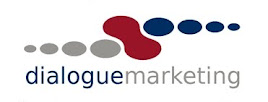
There are so many Email Service Providers (ESP), that the product has almost become a commodity, where only price is the issue.
At the same time, a lot of businesses already have some form of email campaign or other. And in the midst of all of this we have email recipient fatigue, with declining read rates, reduced click throughs, increased unsubscribes, and all around reduced effectiveness.
What now?
Well, for starters, it never was about the technology. The technology was, and is, only a facilitator. The technology is almost at the point where you can expect a certain minimum, like CAN-SPAM compliance, unsubscribe and bounce functionality, auto-responders, customised fields, and such like. So now it is up to you.
Email was never the panacea, or the silver bullet. Like everything else, it boils down to your strategy.
The Strategy Centres Around Dialogue
You cannot rely on mass email alone, and expect to simply blast out message after message, expecting business to come flooding in. If you did expect that, then you clearly still believe in the Tooth Fairy too. Even segment, batch and blast has lost its shine.
You can only reverse the trend through dialogue. Yes, two-way communication. But you will surprised how many people don't get it, are too lazy to get it, too arrogant to listen or are just stupid. I have repeatedly explained the process to many businesses, only to have them email me their standard monthly newsletter, or their standard monthly specials. Sigh.
However, email marketing is still the most effective marketing tool available, but it cannot operate in a vacuum. You have to combine it with other mediums and strategies, incorporating fax, voice, sms, web, blogs and snail mail.
You have to engage in conversations, and you have to nurture your contacts to the next stage, whatever that may be. All of this requires a well devised communications strategy that dictates when and how to deploy these instruments.
Establish Some Goals
The goals are obvious, establish how many phases there are to the sales cycle, and then design a communication strategy for each phase. Use a combination of communication mediums, and create opportunities to communicate with your contact within each phase. Use these opportunities to re-affirm your relationship, and to gather information. This gathered information should advance your awareness of the contact, and should, in turn, lead to new opportunities to communicate.
The collection of meaningful data, and the creation of relevant communication opportunities will greatly reduce unsubscribes, and all the other myriad problems, but at the same time produce revenue producing opportunities.
The Key Ingredient
The magic is you. You have to be completely dedicated to your strategy, and once you implement, you have to persevere. I have seen too many businesses with fantastic communication strategies, the best of technologies BUT no will to support the vision.
Too many commentators and ESPs go on about the details, like dealing with bounces, or the subject line, or the correct time to dispatch a message. These are important, but too many assume complete competency on the part of the business. Without you engaging in the process, there can be no dialogue. So go on, you be the champion.


